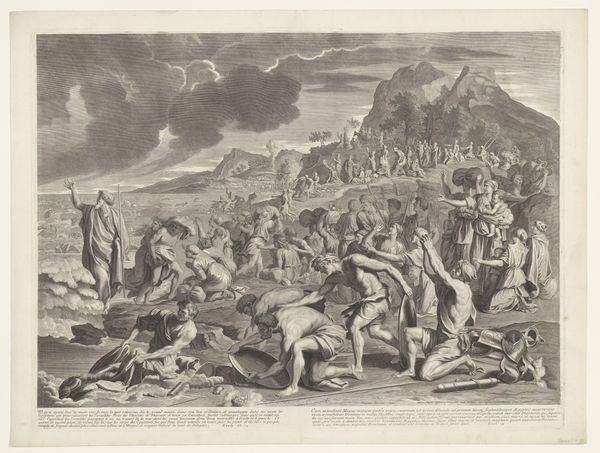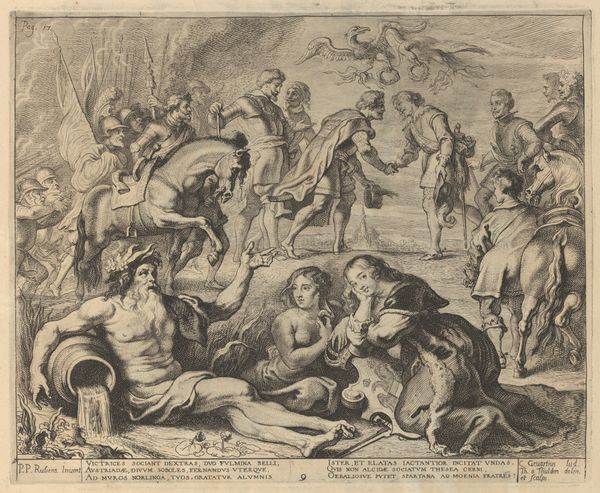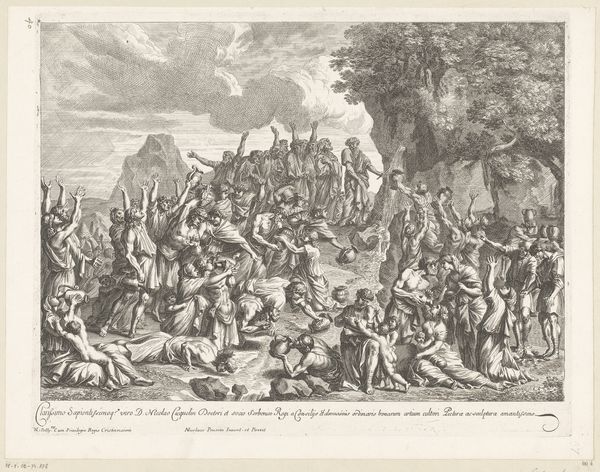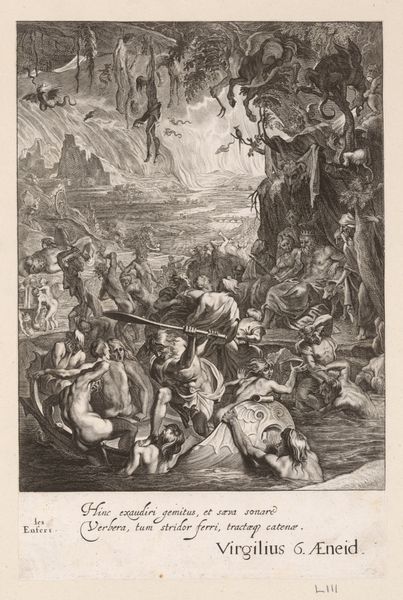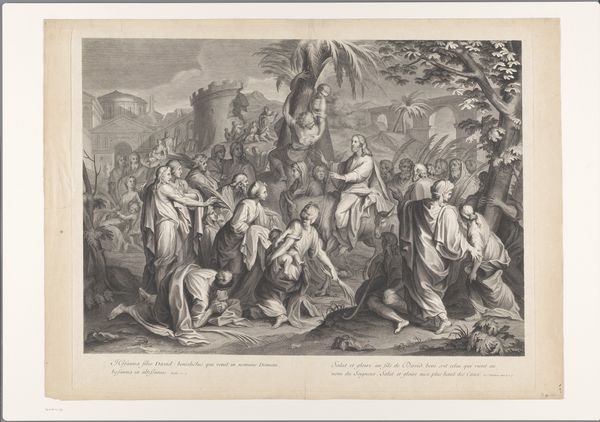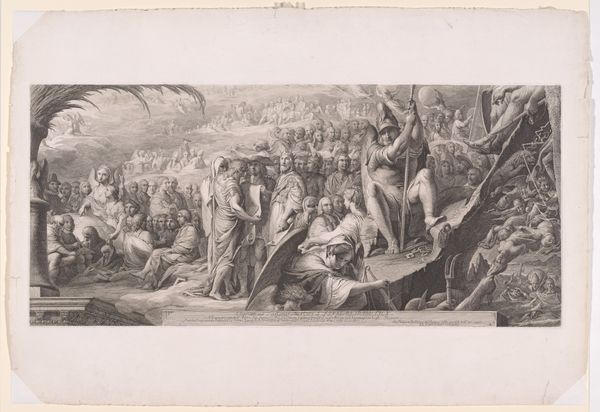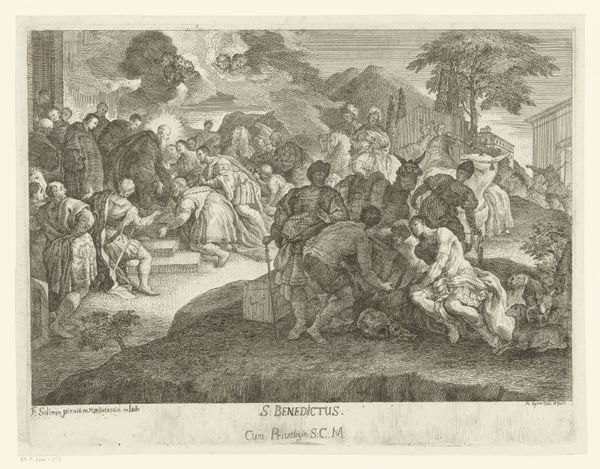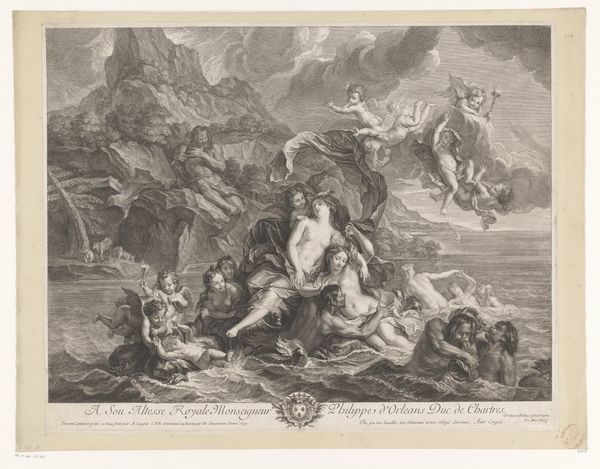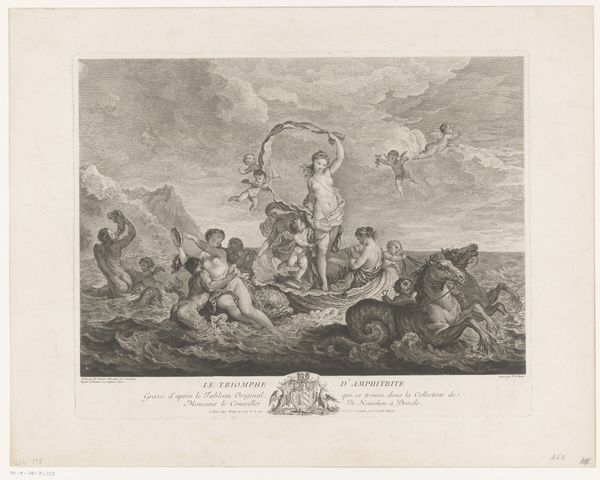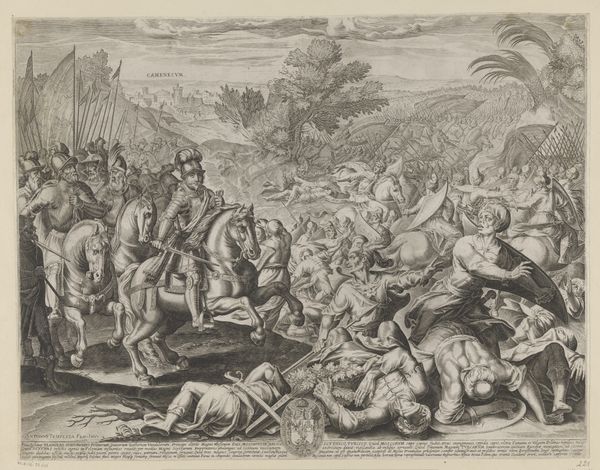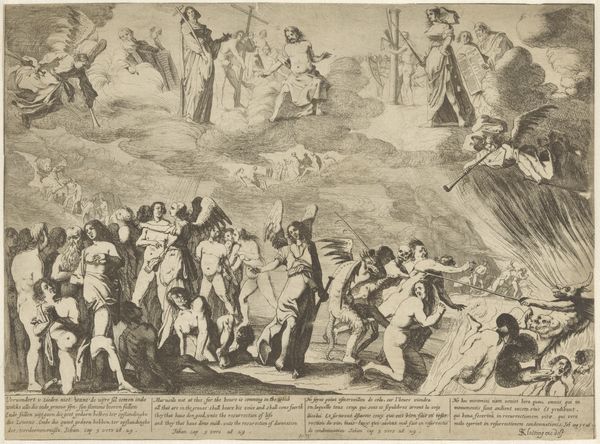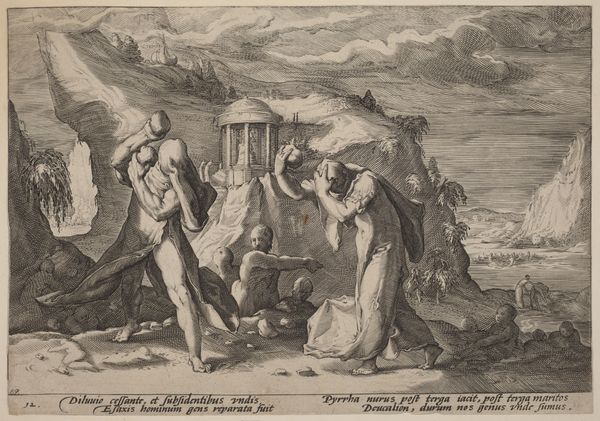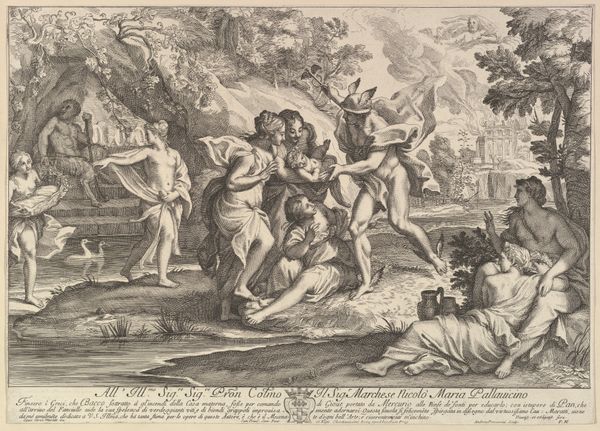
print, engraving
#
narrative-art
#
baroque
# print
#
figuration
#
history-painting
#
engraving
Dimensions: height 582 mm, width 743 mm
Copyright: Rijks Museum: Open Domain
Curator: Here we see "The Raising of the Cross", an engraving attributed to Jean-Baptiste de Poilly, likely created between 1679 and 1728. Editor: Whoa, that's intense! Even in monochrome, the drama just leaps out at you. It feels chaotic, almost operatic. Curator: Precisely. De Poilly's work here reflects the dramatic sensibilities of the Baroque era. Notice how the figures are arranged, guiding your eye from the mourning figures at the bottom left up towards the raised cross and the Roman soldiers. The use of engraving as a printmaking method allowed for the production of extremely detailed artworks, even more spectacular for viewers. Editor: Yeah, there's so much going on. Like, you’ve got these weeping women huddled together, a bunch of heavily armed soldiers, and then this small army struggling to lift the cross. All those lines—the engraver really went to town! It's not subtle, is it? Very in-your-face emotional. Curator: Indeed. These kinds of images served specific religious and didactic purposes. They aimed to inspire awe, reverence, and, importantly, understanding of biblical narratives for a largely illiterate population. Editor: I see that, but you know, the composition is bothering me. It's so packed—does it really draw you into the moment or keep you at a distance with all the details? Is that just a period style or are the politics of the time reflected through it? Curator: Both things can be happening, of course! During that period, the church played a significant role in European culture and governance. This print can serve the religious aims and functions of the church to sway opinions about the story it displays. As you say, art does not live in a vacuum; art shapes reality as much as reality shapes it. Editor: That is wild, isn't it? This artwork makes me question our human capacity to cause such deep violence to each other in the name of ideas and belief. Curator: Absolutely, the raising of the cross holds very diverse political, religious, and ethical meanings to behold and reflect. Editor: Well, after our chat, it resonates in me much more powerfully, let me tell you that! Curator: For me as well; looking at it once more makes me conscious about its significance and its capacity to continue to affect individuals throughout the ages.
Comments
No comments
Be the first to comment and join the conversation on the ultimate creative platform.
